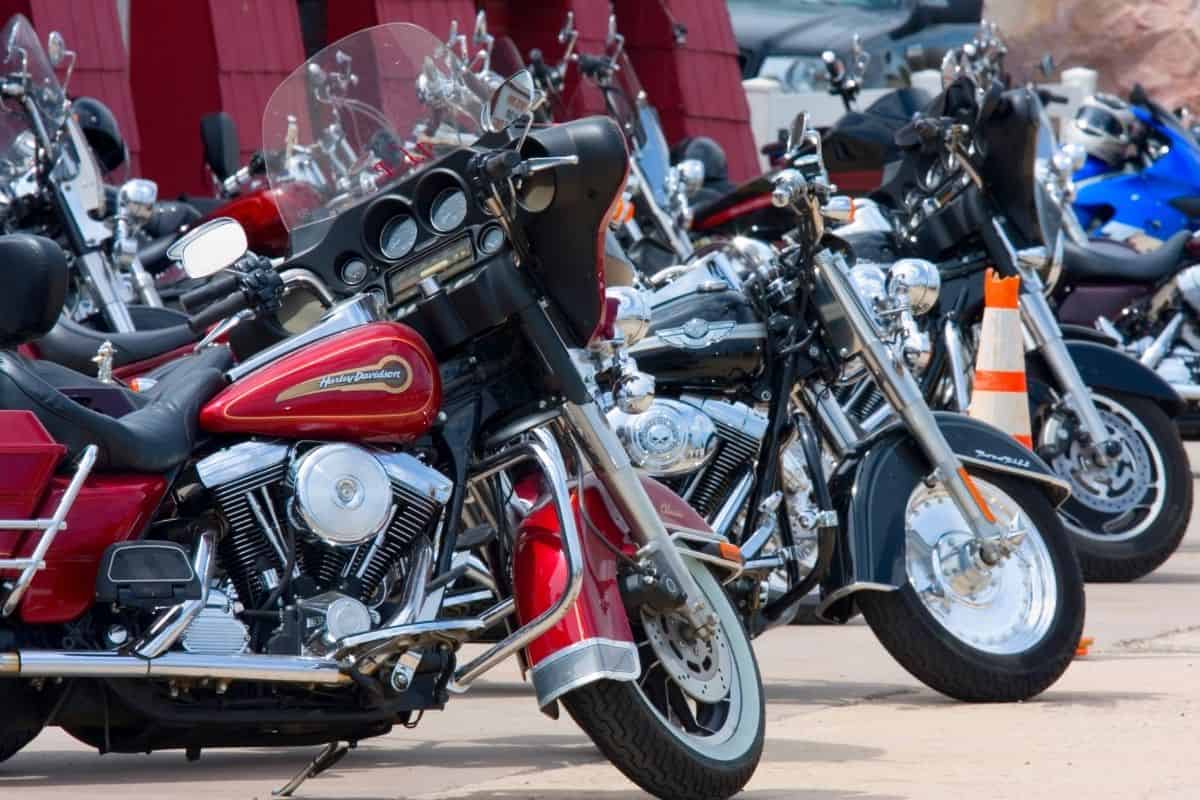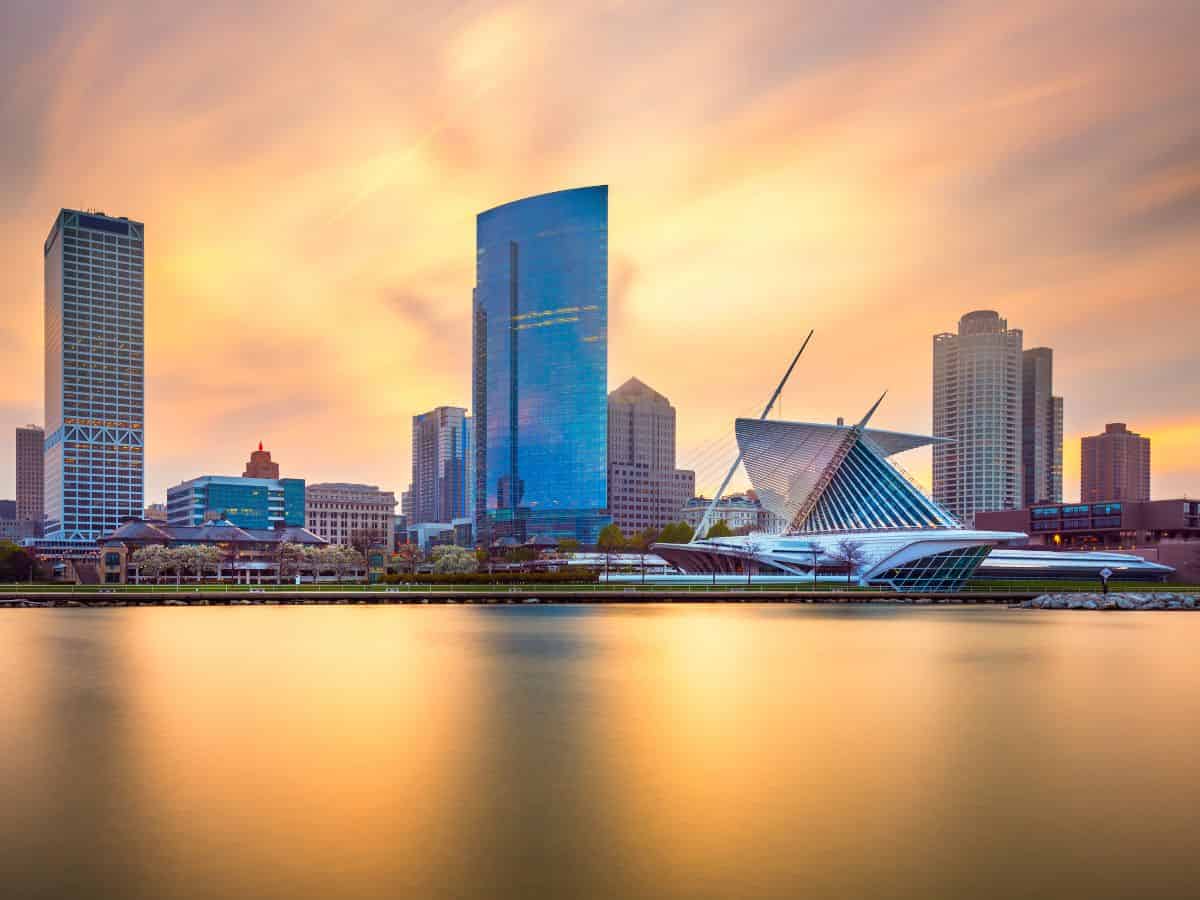In this Article
Toggle

Often celebrated for its beer and cheese, Milwaukee is a city brimming with fascinating facts and hidden histories. From groundbreaking inventions to unique cultural traditions, this article is packed with fascinating Milwaukee facts that showcase its rich heritage.
Nestled on the western shore of Lake Michigan, Milwaukee is a charming Midwestern city. Although it may be best known for its famous breweries and delicious cheese curds, Milwaukee has many more cultural, architectural, and culinary delights to explore. From the riverwalk’s picturesque views to its many festivals, Milwaukee is a city that surprises at every turn. Alongside these attractions, a treasure trove of Milwaukee facts awaits, each adding intrigue and depth to this vibrant city’s story.

To help offset the costs of running EverydayWanderer.com, you’ll find affiliate links lightly sprinkled throughout the site. If you choose to make a purchase via one of these links, there’s no additional cost to you, but I’ll earn a teeny tiny commission. You can read all of the legal blah blah blah (as my little niece says) on the full disclosure page.

1. It Doesn’t Get Bigger Than This
At least not in the Badger State. With more than 1.5 million people calling the city on the western shore of Lake Michigan home, Milwaukee is the largest city in Wisconsin.

2. You Might Think Milwaukee is All Business
After all, inventor Christopher Latham Sholes created the QWERTY keyboard in Milwaukee, paving the way for the modern typewriter and the keyboards now found on laptops and smartphones worldwide. But did you know that Milwaukee is also the birthplace of the answering machine? This device revolutionized communication, allowing people to leave messages when they couldn’t reach someone directly.

3. But Nicknames like “Brew City” and “Beertown” Prove That Milwaukee Knows How to Party
As German immigrants flocked to America’s Midwest in the 19th century, they brought their beer brewing skills. By the 1850s, Milwaukee boasted more than two dozen breweries, several of which remain household names more than 150 years later, like Pabst, Schlitz, and Miller.
Fun Fact: Milwaukee’s Major League Baseball Team, the Brewers, gets its name from the city’s rich brewing history.

4. And When I Say Party, I Mean Bigger than Woodstock
For 11 days each summer, Milwaukee hosts the world’s largest music festival, Summerfest. With 1,000 performances in front of an audience of nearly one million attendees, Summerfest is more than twice the size of the grandmother of music festivals, Woodstock.
In addition to Summerfest, Milwaukee hosts a wide range of cultural and ethnic festivals, including PrideFest, Polish Fest, Bastille Days, Festa Italiana, Irish Fest, and several other annual festivals, giving it yet another nickname, “The City of Festivals.”

5. Even When It Comes to Political Parties
While Americans today may feel torn between the two parties that dominate our politics, voters in Milwaukee already embraced a third-party candidate in the early 1900s when they elected Emil Seidel as the mayor of their fair city. A member of the Socialist Party, Seidel set the stage for two more Socialist Party mayors who served until 1960.
Related Article: The Incredible Story Behind the Joan of Arc Chapel at Marquette University in Milwaukee

6. Speaking of Laws Passed by Politicians
In a city full of breweries, the nationwide constitutional ban on alcohol served up by Prohibition in the 1920s could have sucked the life out of Milwaukee. And the economies of other Midwestern cities with talented German immigrant brewmasters felt its crushing blow. But Milwaukee’s crafty brewers built a survival strategy based on a Catholic canon law from the 1300s that prohibited eating meat on Friday, a wildly successful tradition with its sizable German-American community.
Although they could no longer (officially) serve beer, Milwaukee’s breweries started serving fried fish with cabbage, potatoes, and rye bread on Fridays. (And if a patron found the fish to be a bit too salty and needed a drink to wash it down, servers would promptly provide a glass of beer.) Nearly a century later, the Friday fish fry tradition is still a big deal in Milwaukee!

7. Milwaukee is Where Teddy Roosevelt (Sort of) Dodged a Bullet
In 1912, Milwaukee was the unexpected backdrop for a dramatic moment in American history. As Theodore Roosevelt was campaigning for the presidency, former saloonkeeper John Flammang shot him. The bullet passed through a thick copy of Roosevelt’s speech and his steel eyeglass case before lodging in his chest. However, the experienced hunter and Rough Rider declined immediate medical attention and first delivered his speech.
When a doctor finally examined Roosevelt, he determined that it was more dangerous to remove the bullet than to leave it in place. As a result, Roosevelt carried the bullet with him for the rest of his life.

8. It’s Not About the Cows
In a state known for its dairy industry (and foam cheesehead hats), it’s logical to think that Milwaukee’s “Cream City” nickname has something to do with cows. Instead, it refers to the light-colored bricks made from the local clay, rich in limestone and magnesium, used to construct many of the city’s homes and buildings.
Speaking of cream, Milwaukee is known as the “frozen custard capital of the world.” That’s because it’s home to the world’s highest concentration of frozen custard shops, which sell an egg-yolk-enriched, richer, creamier version of ice cream.

9. But it is the Birthplace of the Hog
More than a century ago, a teenager from Milwaukee was working in the town’s Meiselbach bicycle factory. A few years later, working as an apprentice draftsman, he designed an engine he could mount on a standard bicycle frame. That young man was William S. Harley, and after joining forces with a childhood friend, Arthur Davidson, the Harley-Davidson Motor Company was born. When you visit Milwaukee, you can tour the only Harley-Davidson museum in the world.
Sage Advice: If you visit Littleport, England, where Harley’s father was born, look for a motorcycle monument unveiled in 2003 to celebrate the company’s centennial.

10. A True Gathering Place by the Water
As the Milwaukee River winds through the heart of Milwaukee parallel to the coast of Lake Michigan, it is flanked on both sides by more than three miles of wooden plank walkways and paved sidewalks lined by some of the city’s best boutiques, eateries, and pubs. While the nation touts many fantastic river walks, from Chicago to San Antonio and from Georgia to Oregon, the Milwaukee Riverwalk is the only one in the US that allows pedestrians to walk over boat traffic.

Fans of 1970- and 1980-era sitcoms will recognize the name Arthur Fonzarelli from Happy Days, set in Milwaukee. Standing tall at 5’6” — the actual height of actor Henry Winkler, who played “The Fonz” — a bronze statue dedicated to Milwaukee’s most famous fictional son is a fixture along the Riverwalk.

11. Even When the Water is Frozen
If you love winter sports, you’ll be excited to learn that the Slice of Ice skating rink in Red Arrow Park is larger than the one at Rockefeller Center, so take that, New York! Accommodating up to 100 skaters at a time, this rink is the perfect place to embrace the chilly season and is one of the best things to do in Milwaukee in winter.
12. Or Just Cold AF
For those who can’t get enough of the cold, Milwaukee is home to the Polar Plunge, a bone-chilling tradition where daring souls dive into the icy waters of Lake Michigan on New Year’s Day. This event, dating back to 1916, is a test of endurance and a celebration of the community’s spirit and resilience against the cold Midwestern winter.

13. Soothe Your Lips with Carmex
Whether your lips are chapped from winter activities in Milwaukee or sunburned during a milder season, you can find relief with Carmex, a local invention. Easily identified by its bright yellow container, Carmex began in Alfred Woelbing’s Milwaukee kitchen.

14. It Has an Art Museum that Looks Ready to Sail. Or Soar.
No matter the season, Milwaukee’s art museum on Lake Michigan’s west bank always looks ready to set sail. Atop the Milwaukee Art Museum, the Burke Brise Soleil makes the building look like a cross between a sailing vessel and a soaring gull. With the wingspan of a Boeing 747, this moveable installation serves as a sunscreen for the glass-domed Windhover Hall below. To keep this gigantic work of art from taking flight, sensors automatically close the wings if the wind reaches 23 mph (37 kph) or greater.
And if one moveable piece of architecture isn’t enough, you’re in luck because Milwaukee boasts two! Miller Park, where the Milwaukee Brewers play baseball, has a retractable roof. While this feature is not uncommon for sports stadiums, the roof covering Miller Park is the only fan-shaped convertible roof in the US.

15. And a Mesmerizing Chapel with a Fascinating Past
Another fascinating piece of architecture in Milwaukee is the Joan of Arc Chapel at Marquette University. More than a quiet place of worship, it’s a historical gem with a mesmerizing past that spans two continents and several centuries.
16. As Well as a Blue Ribbon Historic Mansion
And while I promised that these Beer Town facts would go beyond brews and cheese curds, I can’t wrap up without mentioning the Pabst Mansion. Listed on the National Register of Historic Places since 1975, the impressive Flemish Renaissance Revival-style house was built by beer tycoon Frederick Pabst in the late 1800s.
Do You Have a Milwaukee Fact to Share?
Have you spent time in Milwaukee, Wisconsin? Do you have a Milwaukee fact to add to this list? Share your thoughts in the comments section below.

Looking for more information to plan your Wisconsin vacation? Check out my additional recommendations to help you plan your trip to Wisconsin including what to see and do in Wisconsin, the best places to stay in Wisconsin, where to eat in Wisconsin, and more!
Ready to Go?
Use These Helpful Links to Book Your Trip!
- Find low fares with airfarewatchdog and Skyscanner
- Book your plane ticket with Expedia or Kayak
- Or take the scenic route on an epic road trip in a rental car or an RV from Outdoorsy
- From hotels to private homes, find the perfect accommodation with Hotels.com or Vrbo
- Travel in style with a suitcase, carry-on, backpack, or handbag from eBags
- Save on tickets to attractions, sightseeing tours, and more with CityPASS, Tiqets, and Viator
- Don’t leave home without travel insurance from AXA
- Discover the sights, history, and culture of your destination with an interactive scavenger hunt
- Need something else to plan your perfect trip? Visit my travel resources page for more trusted partners. Happy wandering!
Sage Scott
Thank you for sharing!



